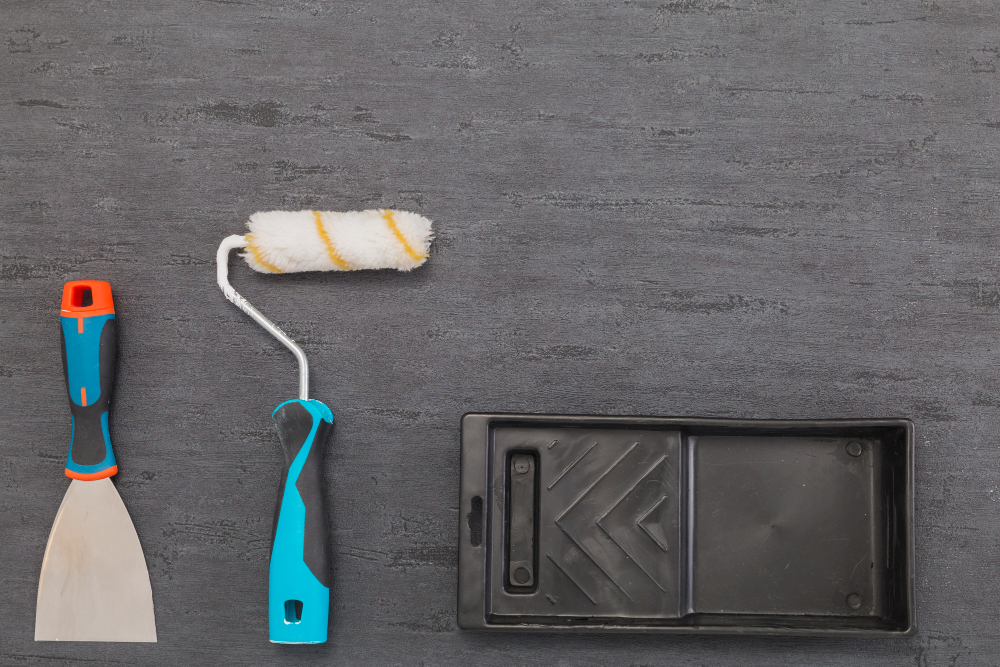In the symphony of home improvement, the interior door plays a leading role. It’s not just a portal to different rooms; it’s a canvas waiting to be transformed by the magic of paint. Whether you’re looking to breathe new life into a tired-looking door or add a splash of color to your space, painting interior doors is an art that can elevate your home’s aesthetic. In this guide, we step into the DIY internal door painting world, sharing tips, tricks, and techniques to help you wield the brush like a true pro.
Picking the Right Door
Choosing a suitable canvas is essential before diving into the world of paint and brushes. Interior doors come in various materials – wood, MDF, fiberglass – each with unique characteristics. If you’re a beginner, a solid wood door might be your best bet, as it’s forgiving for paint application. If you’re feeling more adventurous, MDF doors offer a smooth surface that takes paint like a dream.
Cleaning and Sanding
A masterpiece begins with a clean canvas, and interior door painting is no exception. Start by thoroughly cleaning your door to remove dirt, dust, and lingering residues. Once your door is spick and span, it’s time to smooth the surface by sanding. Lightly sand the door to better bond the paint and the surface. This step helps the paint adhere better and ensures a more polished finish.
Protecting Hardware and Edges
Remember that precision is vital as you gear up for the main event. Use painter’s tape to mask any hardware, hinges, and edges you want to keep paint-free. This step might seem tedious, but it’s the secret to achieving clean lines and avoiding accidental splatters. Invest time in taping correctly, and you’ll thank yourself when you witness the impeccable results.
The Power of Primer
Primer might feel like an extra step, but it’s the secret weapon in your arsenal. A coat of primer creates a smooth base for your paint and helps the color adhere uniformly. It also covers any imperfections, creating a flawless surface. Choose a primer that’s compatible with your paint type and color. Apply a thin, even layer and allow it to dry completely before moving on to the next step.
Acrylic or Oil-Based?
The choice between acrylic and oil-based paint is a pivotal one. Acrylic paint dries quickly, emits fewer fumes, and is easier to clean. On the other hand, oil-based paint offers a more durable finish and smoother application. Consider the level of detail you’re aiming for, your timeline, and your comfort with the materials when making this decision. Whichever you choose, make sure it’s specifically designed for interior surfaces.
From Strokes to Style
Your technique will define the outcome as you stand before your door with a paintbrush. Start with the door edges and details using a smaller brush, gradually moving to the larger flat areas. Brush in the direction of the wood grain for a polished look. Pay attention to the paint’s consistency – it should be smooth and not too thick. Apply thin coats, letting each layer dry before adding another for an even finish.
Let It Dry
Once you’ve meticulously painted every inch of your door, it’s time for the patience game. Let your door dry completely before reattaching hardware, closing it, or adding another coat. Rushing this step can result in smudges, streaks, and a less-than-perfect finish. Set up a cozy corner, brew tea, and let your door bask in the glory of drying time.
Applying a Protective Finish
While your freshly painted door might look stunning, giving it an extra layer of protection is essential. Applying a clear protective finish or polyurethane sealer can prevent scratches, smudges, and wear and tear over time. Opt for a finish that suits your paint type – water-based for acrylic and oil-based for oil paint. Apply it using smooth brush strokes and allow it to dry as per the manufacturer’s instructions.
Removing Tape and Hardware
With the final touches in place, it’s time to reveal the masterpiece you’ve created. Carefully remove the painter’s tape at a 45-degree angle to avoid peeling off any fresh paint. Reattach any hardware you removed, ensuring they’re correctly aligned. Stand back and admire the transformation – your once-ordinary door has become a canvas of color, a testament to your DIY prowess.
Embracing the DIY Spirit
As you stand in awe of your freshly painted door, remember that the skills you’ve acquired extend beyond this singular project. Painting interior doors is a gateway to a world of DIY possibilities. Armed with brushes, paint, and a dash of creativity, you can transform your entries and your entire living space. So, embrace the meeting, channel your inner artist, and revel in the satisfaction of a job well done.
